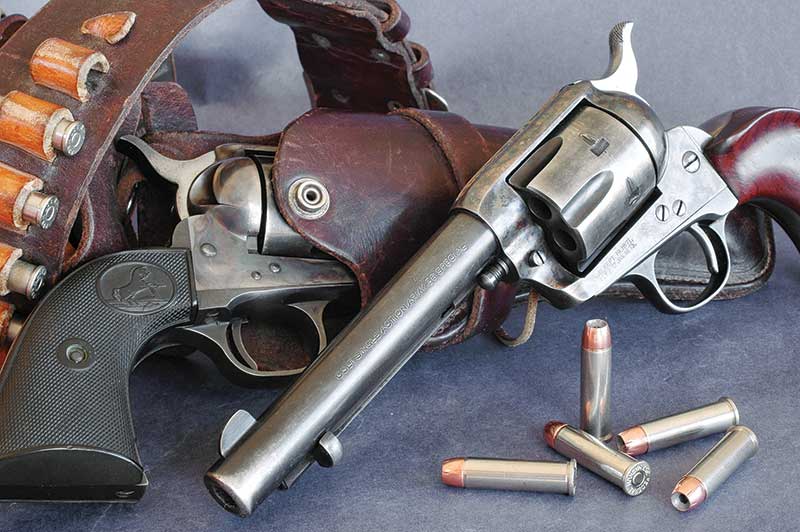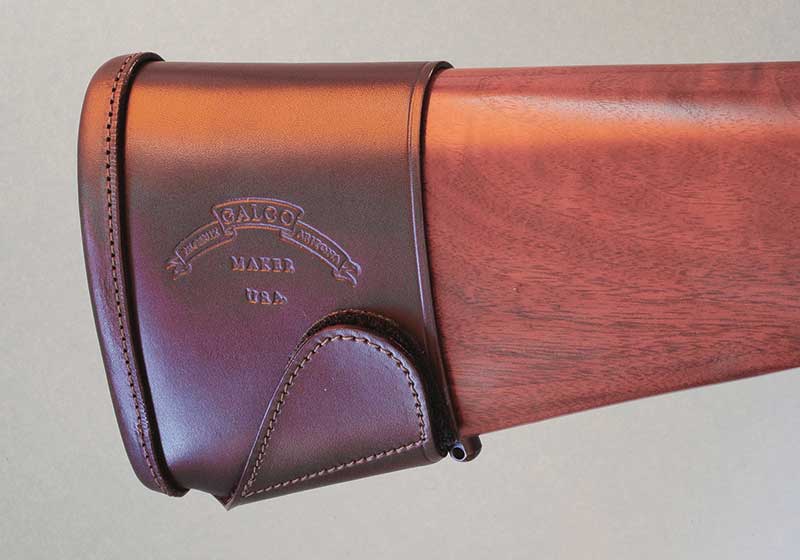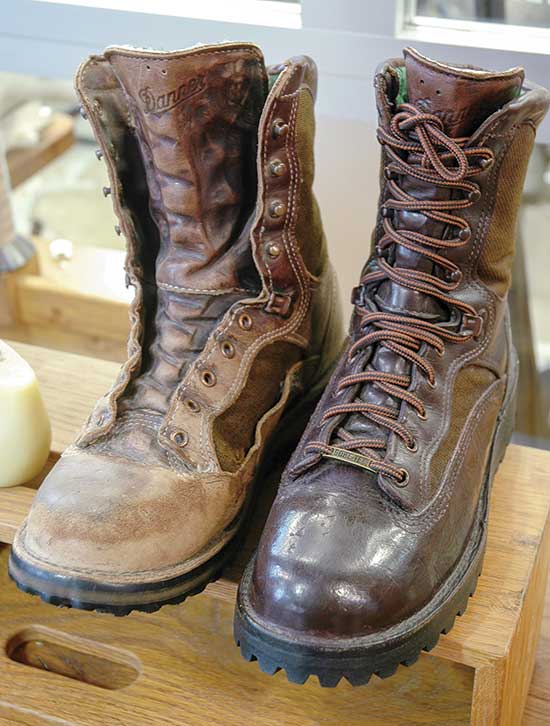No Replacing It
These days leather loin-cloths serve a shrinking market. But beyond cradling big iron and keeping your pelvis off Dobbin’s spine, leather has many uses — especially for shooters. Leather belts carry ammo in leather pouches while snugging trousers in place. A leather shooting coat is the rifleman’s girdle. In my youth rifles wore leather scope caps and lace-on cheek-pieces. The finest long guns still have leather butt-pads and travel in leather-bound cases. Elk hunters ride into the Rockies clutching leather reins in leather gloves. They climb in leather boots and pack game out on sawbucks cinched to mules by leather rigging. On safari, leather gaiters keep grass awns out of hunting shoes ….
Leather’s allure has much to do with its ties to people and adventures of times long past. Leather carried “Wild Bill” Hickock’s 1851 Colts, the revolvers of William Bonney, the Earps, the Dalton Gang and Bat Masterson. Its Hollywood tenure has outlived westerns. Don Johnson’s shoulder holster in the TV series Miami Vice became as distinctive as the show’s cinematography. When the pilot aired in 1984, Galco had been producing shoulder rigs for 14 years — 11 as The Original Jackass Leather Company in Chicago, where founder Richard Gallagher sewed horsehide holsters for the police. When Vice producers had to hide Johnson’s Bren 10 under his Armani suit, they tapped Gallagher, then in Galco International’s new Phoenix digs. The Jackass shoulder holster became the Miami Classic.
With all respect to Kydex, leather is still, arguably, the best holster material. It can be molded by the gun to fit like skin. Its rough inner surface grips and caresses steel, securing but compliantly releasing it. A hard, polished exterior slips easily against clothing and sheds water like glass.








